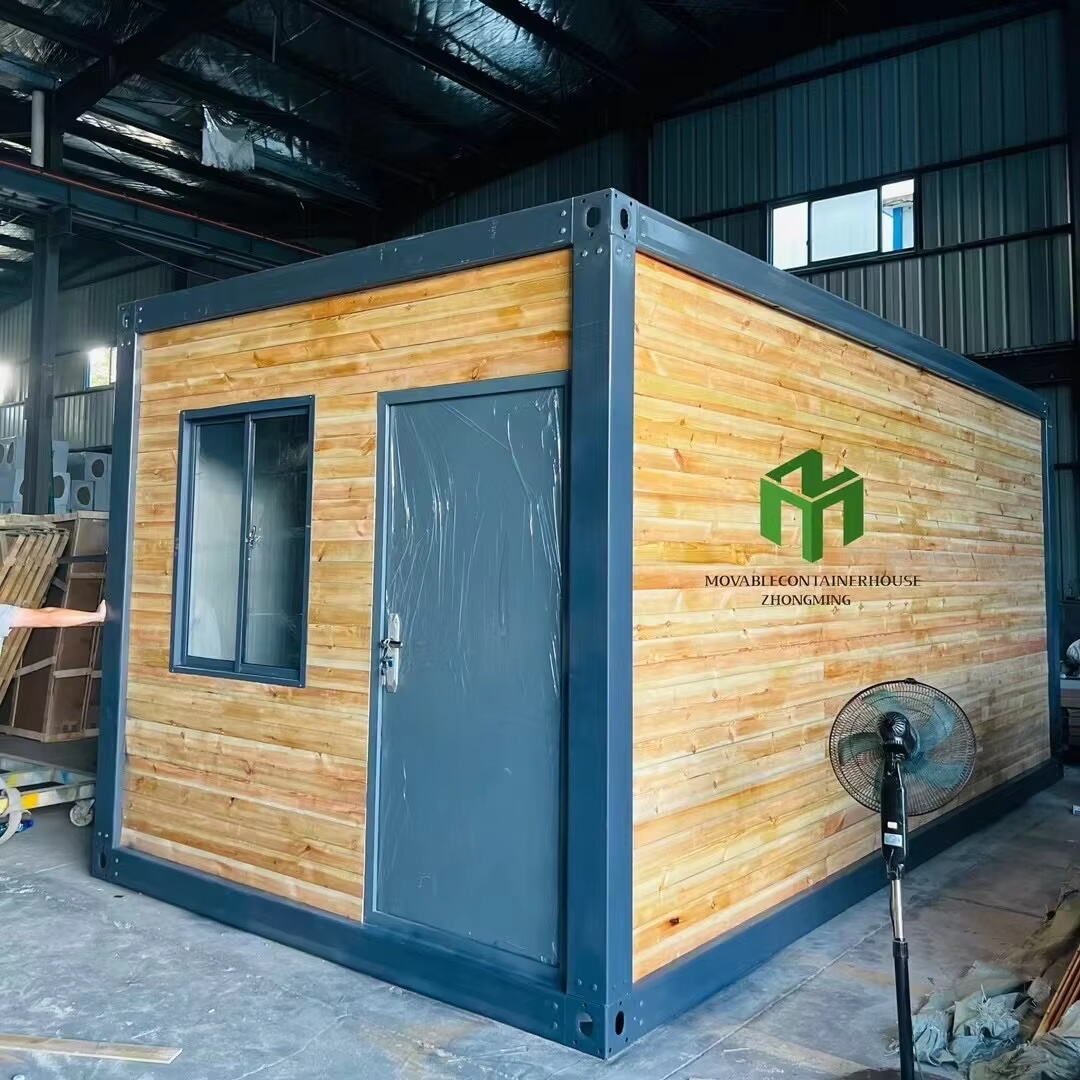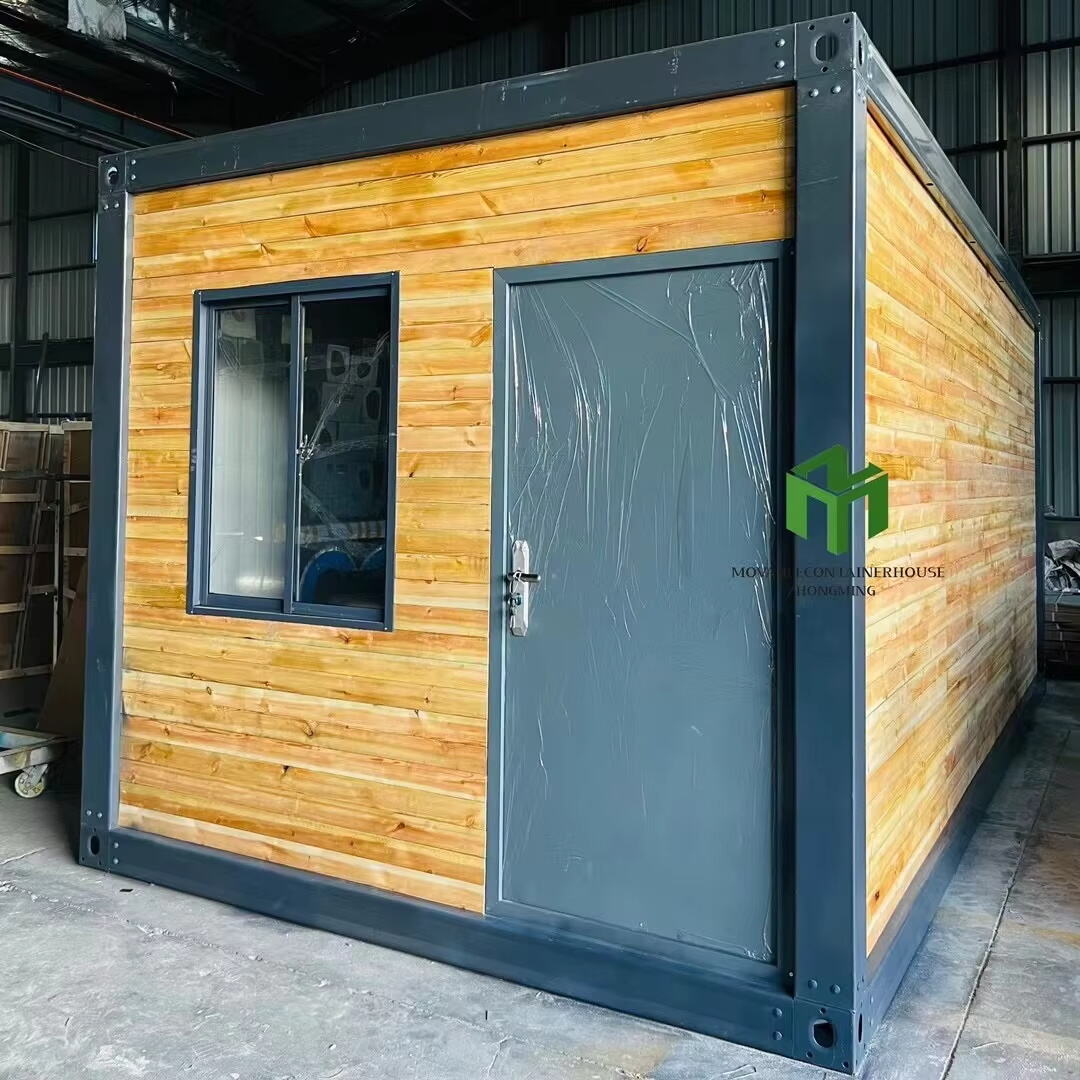תכנון התחלה חכמה עם בניית מודולרי
להתחיל לבנות מרחב חדש הוא תמיד אתגר מרגש. עבור קונים בפעם הראשונה המחפשים פתרון מעשי וגמיש, בחירה של בית CONTAINER יכול להיות צעד מצוין לקראת חיים או עבודה חסרות עלות וחברותיות לסביבה. מודל בית המכולות התפתח באופן משמעותי בשנים האחרונות, ומציע פתרונות מסוגננים, יעילים וניתנים להתאמה אישית רבה שמתאימים למגוון רחב של צרכים.
עם תכנון נכון, ציפיות מציאותיות, וקבלת החלטות חכמות, אפילו אנשים חדשים יכולים לנווט בהצלחה את תהליך בניית בית המכולות ולהימנע מטעויות נפוצות.
הבנת היסודות של בניית בית מכולות
מהי בית קונטיינר ולמה לבחור בו?
א בית CONTAINER הוא מבנה מודולרי שנבנה בעיקר מקונטיינרים פליזים. יחידות אלו מציעות קיימנות, ניידות וגיוון בעיצוב. קונים בפעם הראשונה פונים בית קונטיינרים בשל העלות היחסית הנמוכה, זמני בנייה מהירים ותאימות הן למיקומים עירוניים והן למיקומים נידחים.
היופי שבבית הקונטיינר נובע מהטבע המודולרי שלו. המבנים יכולים להיות יחידות בודדות או שילובם יוצר מבנים גדולים יותר. בעזרת גישת עיצוב מתאימה, גם קונטיינר קטן יכול להפוך למבנה מודרני וחייתי עם כל הנוחויות.
היבטים משפטיים ותנאי תכנון
לפני ביצוע ההזמנה או שרטוט תוכניות הבנייה, חשוב להבין את חוקי התכנון והבנייה המקומיים. לא בכל האזורים מותר לבנות בתים מקונטיינרים, או שיכולים להיות דרישות מסוימות בנוגע לסוגי יסודות, גובה מרבי או סטנדרטים של בידוד תרמי.
קונים בפעם הראשונה צריכים להתייעץ עם הרשויות המקומיות או לשכור מומחה שמכיר את הקודים המקומיים. שלב זה ימנע עיכובים ושינויים יקרים בהמשך הפרויקט. יצרני בתים מحاטנים רבים מסין מציעים מסמכים בסיסיים של עמידה בתקנים, אך חשוב לוודא שהעיצוב עונה גם על הדרישות המקומיות שלך.

תכנון עיצוב ואופטימיזציה של המרחב
להעדיף פונקציונליות על פני גודל
טעות נפוצה בקרב קונים בפעם הראשונה היא התמקדות רבה מדי בהרחבת המרחב ולא די באופטימיזציה שלו. בית חאטן הוא בתוכו צפוף, ולכן כל מטר מרובע חייב להיות פונקציונלי. לשקול את סגנון החיים או הפעילות שלך – האם אתה צריך מרחב עבודה, אחסון נוסף, או אזורי שינה מרובים?
ריהוט רב-תכליתי, מדפים מובנים וחלקים שנסגרים הם מפתח לתחושת מרחב וחוסן בבית החאטן שלך. עיצוב סביב פעילויות יומיומיות עוזר לך ליצור בית או מרחב עבודה שמתאים באמת לסדרת היום שלך.
לבחור תכנון ניתן להרחבה
אמנם ייתכן שיהיה מפתה לבנות הכל בבת אחת, אך גישה חכמה היא להתחיל בקטן ולהרחיב בהמשך. אחד היתרונות העיקריים של בית מכולות הוא שניתן להרחיב אותו בקלות. על ידי התחלה עם מבנה של יחידה אחת או שתיים והוספת מודולים חדשים לאורך זמן, אתם שומרים על גמישות מבלי להתחייב לתכנון מלא בטרם עת.
תכנון תכנון המאפשר הרחבות עתידיות הוא צעד חכם, במיוחד לאנשים שאינם בטוחים לגבי השימוש לטווח רחוק. ודא שמערכות תועלת כמו צינורות וחיווט חשמלי יכולים לאפשר הרחבות עתידיות.
בחירת החומרים והמאפיינים הנכונים
בידוד ותיעوية
מכולות המשלוח מיוצרות מפליז, כלומר הן מוליכות חום וקור יותר מחומרי בנייה מקובלים. ללא בידוד תקין, בית המכולה עלול להפוך לחם מדי בקיץ וקר מדי בחורף. קונים בפעם הראשונה צריכים להשקיע בבידוד איכותי המתאים לאקלים המקומי שלהם.
תפעול חשוב לא פחות. חלונות, חלונות גג ואביזרי אוורור פסיביים יכולים לשפר משמעותית את איכות האוויר הפנימי ופיקוח על הטמפרטורה. יצרנים רבים בסין של בתים מכולות כוללים כיום איטום מותאם אישית ואביזרי אוורור כדי לעמוד בדרישות אזורי שונות.
רִצּוּפִים, טריטורים וסיום
לגימור הפנימי של בית המכולות שלכם יש תפקיד גדול בנוחות ובעמידות. ריצוף דיקט סטנדרטי מהמיכל המקורי עשוי לא להתאים לשימוש מגורים ארוך טווח. בחרו ריצוף חזק ודורש תחזוקה מועטה כמו קרשי ויניל או עץ קשה מטופל.
באופן דומה, טריאטים לדפנות כמו גבס או פנלים אלומיניום יכולים לגרום למרחב להרגיש כמו בית מסורתי יותר. ניתן להוסיף חומרים לשילוט רעש כדי להפחית רעש חיצוני, ולהפוך את הבית המכולה שלך למרחב שקט ופרטי.
שיתוף פעולה עם היצרן או הבונה הנכונים
לחפש ניסיון ויכולות התאמה אישית
לא כל ספקי בתים מקונטיינר נוצרים שווים. כקונה בפעם הראשונה, עבודה עם יצרן מנוסה המציע התאמה אישית ותקשורת ברורה תחסוך ממך זמן, כסף ועומס. ודא לבקש דוגמאות לפרויקטים קודמים, במיוחד כאלו שדומים לצרכיך.
ספקי סין ידועים בדגםי בתים מקונטיינרים מוגמרים באיכות גבוהה, ולעיתים קרובות מציעים מגוון רחב של תכונות התאמה אישית. ודא שהחברה תומכת למשלוחים בינלאומיים, מסמכים להסכמה והוראות הרכבה מפורטות.
שאל את השאלות הנכונות לפני שאתה מתחייב
לפני חתימה על החוזה, שקול לשאול שאלות מרכזיות: מה כלול בחבילה? האם יש צורך בהרכבה באתר? מהן דרישות התפעול? האם יש תמיכה טכנית לאחר המשלוח?
השגת תשובות ברורות עוזרת לקונים בפעם הראשונה לבצע בחירות מושכלות. הרכיבו רשימה של דרישות הכרחיות ואחרות רצויות, והשוו ביניהן לבין ההצעות של כל ספק. שותפות נכונה יכולה להפוך את מסע הבנייה לחוויה חלקה ומשתלמת.
עצות להתקנה ולחילוץ בפועל
הכנה של אתר והשלדת
בית מכולה עשוי להיות מודולרי ונייד, אך עדיין הוא מחייב שלדת איתנה. בהתאם לעיצוב ולמיקום שלכם, אפשרויות עונים כוללות שלדת בטון, עמודי פלדה או פלטפורמות מרוממות. ניקוז תקין, יישור, ונתיבי גישה הם שיקולים חיוניים בשלב ההכנה של האתר.
רבים מהקונים בפעם הראשונה ממעיטים בחשיבות של הערכת האתר. מומלץ להתייעץ עם מהנדס אזרחי או מתכנן אתר שיכול להעריך את הקרקע ולהמליץ על מערכת שלדת הטובה ביותר לבית מכולה שלכם.
תשתיות ורישיון
התקנת תקשורת—מים, חשמל, אינטרנט וביוב—היא שלב קריטי בהפיכת בית הקונטיינר שלך לישוב. תכנן את החיבורים האלה בשלב העיצוב המוקדם. דגמים מסוימים של בתים מקונטיינרים מגיעים עם צינורות ביוב וחיווט חשמלי מותקנים ב завод, מה שפישט את התהליך.
ודא תמיד שהתמחות בתחומי התקשורת מתבצעת על ידי אנשי מקצוע מוסמכים, וקבל מראש את כל הרשאות הדרושות. זה ימנע עיכובים בלתי צפויים ויאפשר עמידה בתקני הבטחה.
Enance ותנאים ארוכי טווח
מניעת שיטפון ושימור החזית
מאחר שמבני קונטיינר מיוצרים מפליז, הם פגיעים לשיטפון אם לא מת treated כראוי. ציפוי צבע איכותי ו الطلאות אנטי-קורוזיה יכולות להאריך משמעותית את חיי הקונטיינר שלך. בדיקות תקופתיות ותחזוקה שוטפת הן חלק מהתחזוקה השוטפת.
בחר יצרנים שמפעילים טיפול תעשייתי למניעת שיטפון ומציעים גימורי חזית בעלי עמידות ב-UV ובמגעים עם מזג האוויר. בסביבות קשות, ייתכן שיהיה צורך בפיגום או בקרום הגנה נוסף כדי לשמור על קיימנות.
שדרוגים עתידיים וערך 재מכירה
בית אוניה שנשמר היטב יכול לשמור על ערכו ולהישאר שימושי שנים רבות. אם אתה מתכנן למכור או להפוך את השימוש באונייה בהמשך, שקול להוסיף תכונות שמשפרות את הגמישות שלה - כגון חיבורים מודולריים, גג מחוזק ומערכות לחיסכון באנרגיה.
שדרוגים כמו פאנלים סולריים, איסוף מי גשמים ואינטגרציה של בית חכם גם הם מגדילים את המושך והפונקציונליות. חשב מה משתמשים עתידיים עשויים להיות צריכים, ותוכנן מראש עם התאמה באשנב.
שאלות נפוצות
מהו עלות הבנייה הממוצעת של בית אוניה לקונים בפעם הראשונה?
העלויות משתנות על פי הגודל, החומרים וההתאמות. בממוצע, בית אוניה בסיסי יכול לנוע בין 15,000 ל-50,000 דולר. דגמים מותאמים אישית לחלוטין עשויים לעלות יותר, תלוי ברמת הסיום והתקנת תilities.
האם נדרש רישיון לבניית בית אוניה?
כן, ברוב האזורים. כנראה שתרצו אישור תכנון, רישיון בנייה ואולי גם בדיקות. תמיד כדאי לבדוק עם הרשויות המקומיות לפני תחילת הבנייה.
כמה זמן לוקח בנייה של בית מכולה?
יחידות בסיסיות יכולות להיבנות ולהישלח בתוך 4 עד 6 שבועות. פרויקטים מורכבים או מותאמים אישית של בתים מכולות עשויים להימשך זמן רב יותר, במיוחד אם יש צורך בשיפוץ בינלאומי או הכנת אתר מיוחד.
האם בית מכולה מתאים לכל האקלים?
עם בידוד ותקרת תקשורת מתאימות, ניתן להתאים בית מכולה כמעט לכל סוגי האקלים, כולל אזורים חמים, קרים, יבשים ולחים. ודאו שבוחרים בחומרים ובמערכות המתאימות לסביבה שלכם.


